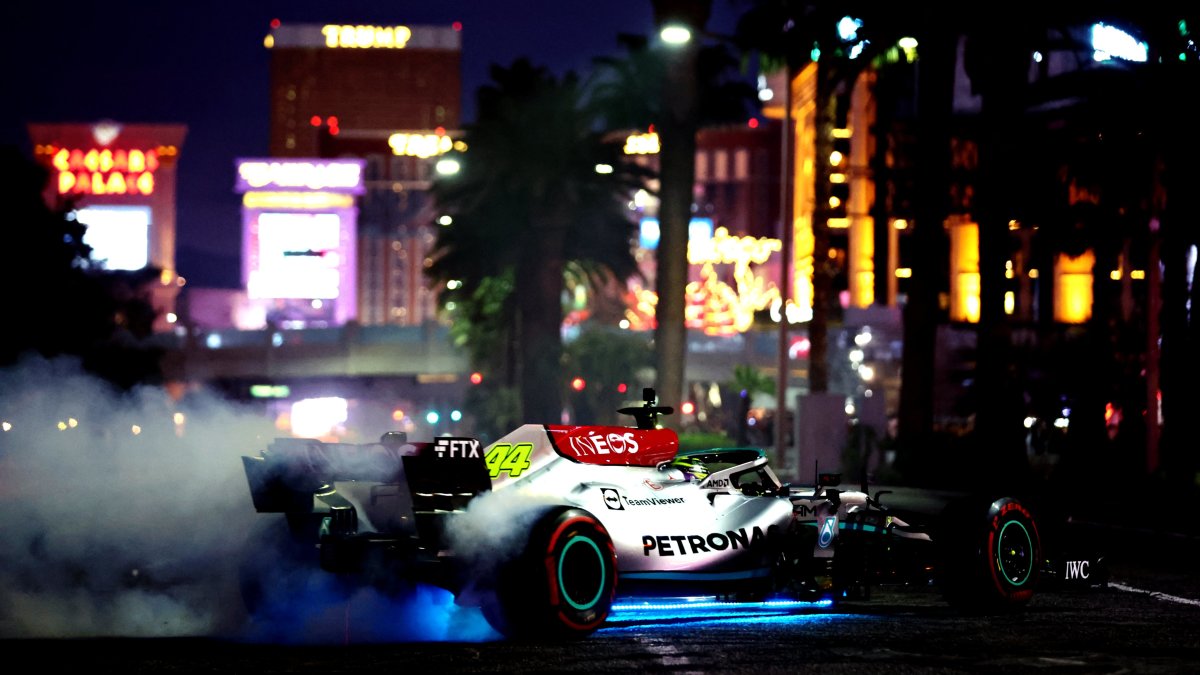Las Vegas Grand Prix: Pirelli Warns Teams Of "Major Technical Challenge"

In a historic first for Formula 1, the Las Vegas Grand Prix presents a unique challenge with its night race schedule and the debut of the Las Vegas Strip circuit. Pirelli, the tire supplier for F1, has announced a selection of their softest tires for the event, emphasising the technical complexity teams will face due to low temperatures and lack of testing.
Key Takeaways:
- Tire Selection and Schedule: Pirelli has chosen the softest tires in its range for the Las Vegas Grand Prix, using C3 as P Zero White hard, C4 as P Zero Yellow medium, and C5 as P Zero Red soft. The event will also mark a first in F1 history, with sessions spanning multiple days in a unique night race format.
- Circuit Design and Features: The new street circuit features 17 corners and three straights over a 6.12-kilometer lap, with an estimated top speed of 342kph. The race distance is set for 50 laps, with significant landmarks such as The Sphere adding to the spectacle.
- Historical Context and Celebrations: The race marks F1's return to Las Vegas since the early 1980s, with an elaborate opening ceremony featuring renowned artists. The event's infrastructure, including a pit building shaped like the F1 logo, adds to the grandeur.

The Las Vegas Grand Prix is setting the stage for an unparalleled race weekend. For the first time in F1's history, the race sessions will stretch over multiple days, beginning with the first free practice on Thursday evening and culminating in the race on Saturday night. This unusual schedule, combined with the night race format, introduces a new dynamic to the weekend.
The circuit itself is a marvel, comprising 17 corners and three straights, and extending over 6.12 kilometres. It's expected to reach top speeds of 342kph, making it one of the fastest tracks in the season necessitating low levels of downforce from each car. The race's urban setting, along the iconic Las Vegas Strip, adds to its allure, with landmarks like The Sphere, the world's largest LED-covered spherical structure, enhancing the visual experience.
Celebrating F1's return to Las Vegas, an opening ceremony will be held, featuring performances by Steve Aoki, Thirty Seconds to Mars, will.i.am, and the Cirque du Soleil troupe. The event's infrastructure, notably the pit building and paddock, has been constructed in just over a year, showcasing the swift and efficient preparation for this grand event.
Mario Isola, head of F1 and car racing at Pirelli, has highlighted the challenges teams will face, warning them of the individual features of this exciting weekend. With no prior racing experience on the Las Vegas Strip circuit, teams face the uncertainty of a new track. Pirelli's decision to use their softest tire compounds aims to counter the unique demands of the circuit, including its mixed surface and the colder night temperatures.
"It will be a major technical challenge for both the teams and us, as we head into this race with no real references apart from simulation," he admitted. "Nobody has ever actually driven the 6.12-kilometre Las Vegas Strip circuit before, which is second only to Spa in terms of overall length this year, characterised by three straights and 17 corners.
"The surface will be a mix of the usual street asphalt, especially on the actual Strip, as well as other parts that have been completely re-asphalted for the occasion; adding another unknown element.
"There won't be any support races and the track will be opened again to normal traffic for long chunks of the day, which means that the surface won't rubber in as usual and deliver improved grip.
He continued, highlighting the qualities of the long straight-away that leads cars across the iconic Vegas strip.
"We're expecting the cars to run quite low levels of downforce, similar to Baku or indeed
Monza
: hitting a high top speed will be key to being competitive.
"All the sessions will take place at night, with unusual ambient and track temperatures for a race weekend; more similar to those found back when pre-season testing used to take place in Europe.
"Those long straights also make it harder to warm up tyres in qualifying, as well as keep them in the right window: the same challenge as seen in Baku, which will probably be more pronounced in Las Vegas."
Teams will be given the three softest compounds available from Pirelli this week to maximise the grip through cold temperatures.
"In cold conditions, the gap between cold tyre pressures and normal running pressures is greatly reduced - so when the car is moving, tyre pressure will increase a lot less than on other circuits due to the low asphalt temperatures.
"As a result, we think that running pressures will still be lower than on other circuits that are tough on tyres, such as Baku for example.
"So all the elements are in place for an extraordinary race, packed with surprises and unpredictability. As the title of Elvis Presley's famous racing film goes... Viva Las Vegas!"
